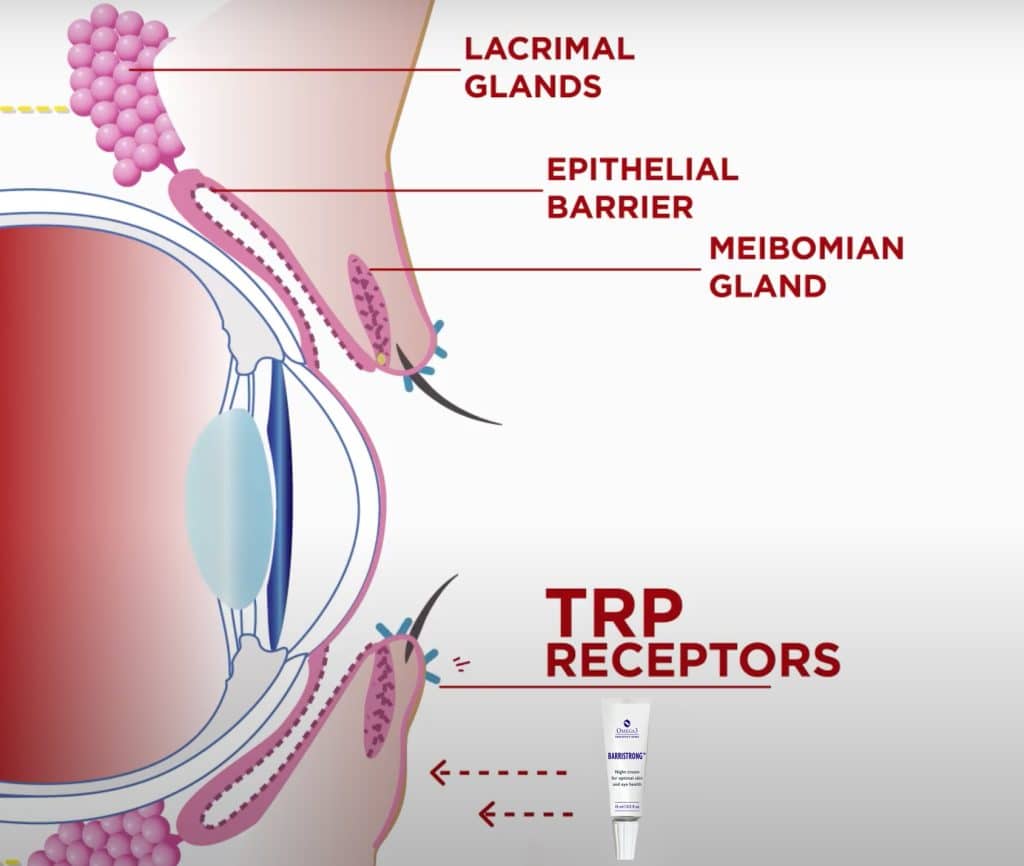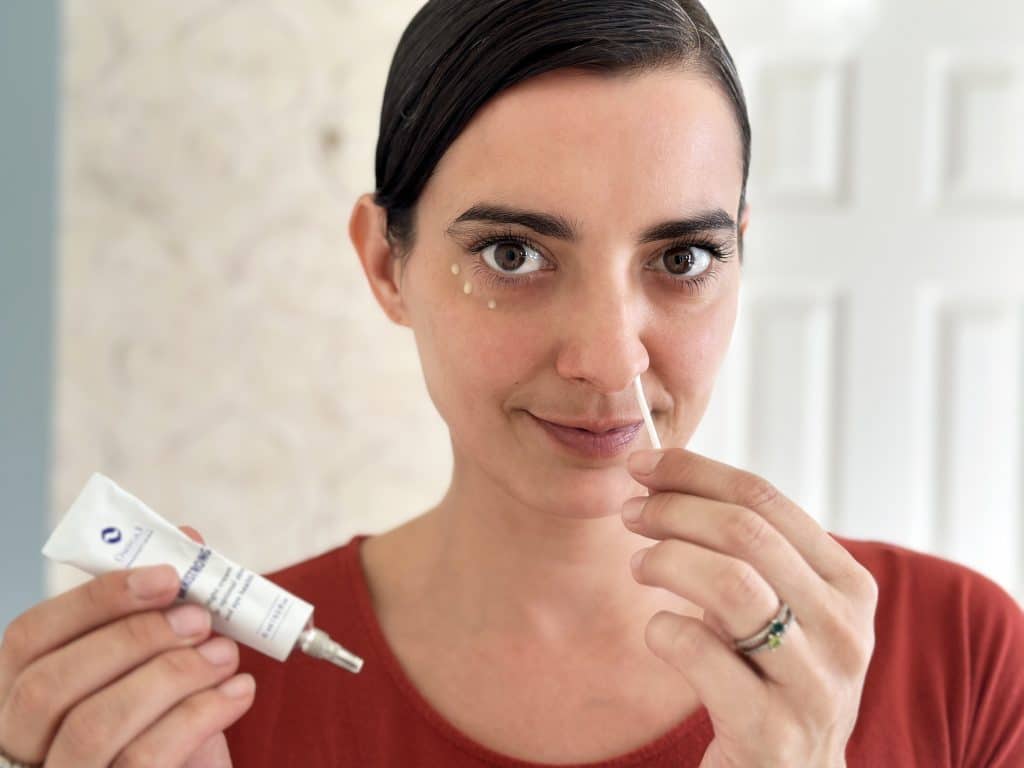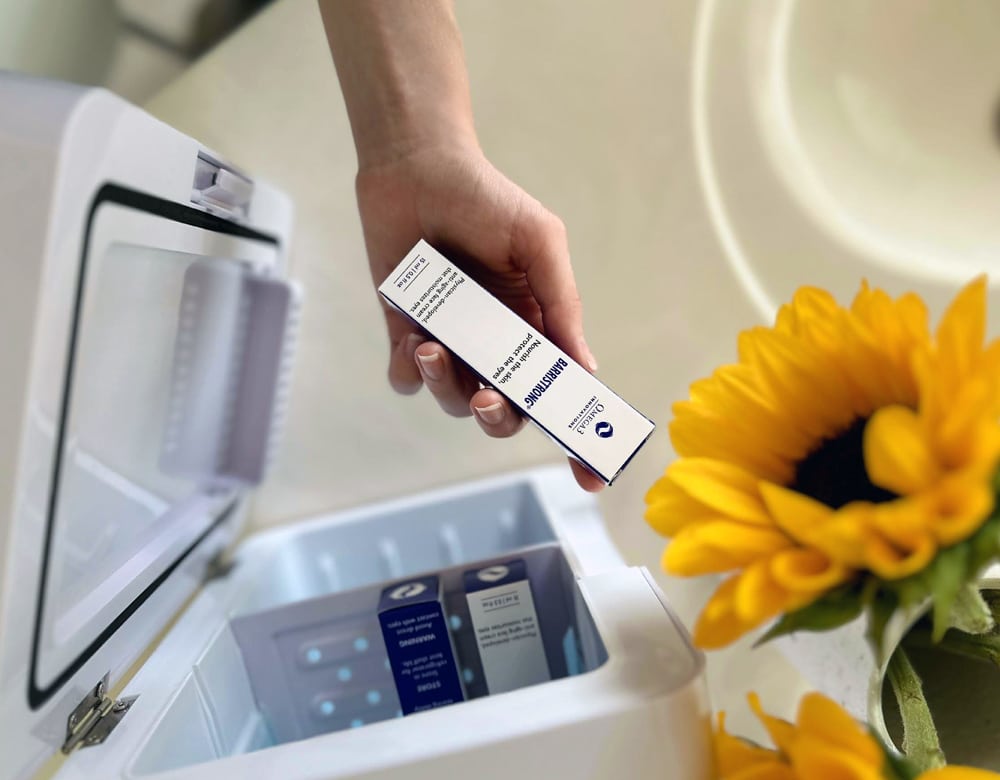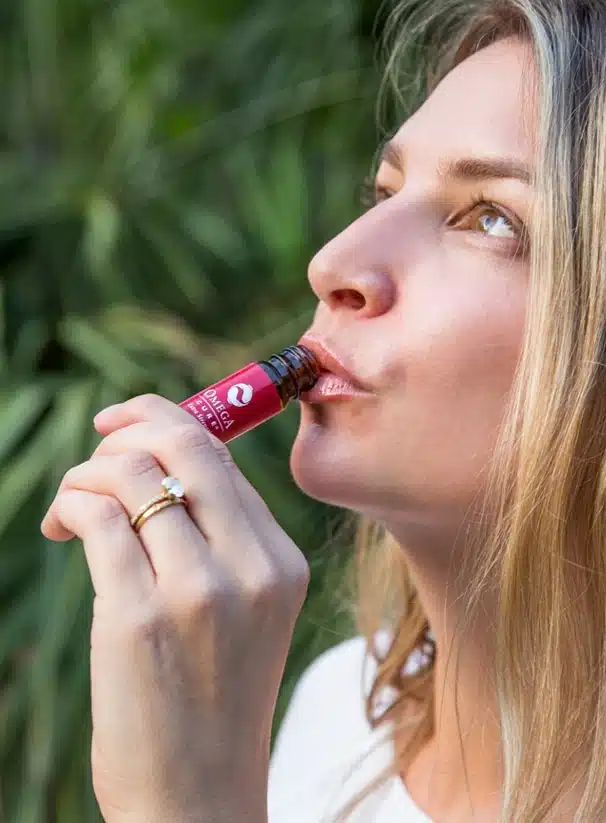The Startling Link Between Skin Care and Eye Health
Dry eye complaints are on the rise worldwide.
Many risk factors – including aging and increased computer use – help explain the increase. But there’s another driver few people know about: The exploding use of cosmetics and anti-aging face creams.
In this article, we’ll look at how the products we put on our skin influence our eyes, and how we can better care for both.
How Anti-Aging Creams Become Dry Eye Producers
It’s not a secret. For years, scientists have shown that regular cosmetic use negatively impacts eye health.
Why? There are many theories. For one, cosmetics and face creams contain chemicals that can migrate into the eye and cause irritation. Old products can also get contaminated over time and introduce harmful microbes into the eye area.
One of the most interesting new hypotheses, however, centers on the transient receptor potential (TRP) ion channels in the skin. When these TRP channels are activated, it can trigger pain and inflammation.

Nobel winning science: In 2021, the Nobel Prize in Physiology or Medicine was awarded for the discovery of the TRP ion channels. The TRP system helps explain why the products we apply to our face impact our eye health.
Understanding the Skin-Eye Connection
On the surface and skin around our eyes, we have lots of TRP channels. These channels sense environmental factors, like temperature, pressure, pH levels and chemicals in our surroundings. They then send this information to the brain to compose a response, like blinking or tearing, via the trigeminal nerve.
Unfortunately, the TRP system can get disrupted. Dry eye sufferers typically exhibit TRP imbalances in their ocular tissue. This sends distorted signals to the brain and makes the eye less able to adjust to environmental changes.
Many ingredients – even water – modulate our TRP channels. But certain ingredients stimulate a more powerful, negative reaction. These include many of the ones that show up in our skin care products.
What Skin Care Ingredients Fuel Inflammation?
Vitamin A derivatives – also known as retinoids – are popular in anti-aging creams. They’re thought to reduce wrinkles and improve skin appearance after initial irritation.
Unbeknownst to many, retinoids can contribute to eye discomfort – even when applied far away from the eye. This could be because retinoids stimulate TRPV1, which initiates inflammation. (Notably, several research papers also describe how retinoids can promote meibomian gland dysfunction, the leading cause of dry eye disease).
It isn’t just retinoids, however. Other common skin cream ingredients – like the preservative phenoxyethanol – also stimulate TRPV1. As do external factors like UV radiation and air pollution.

Problem ingredients: Many popular anti-aging creams contain retinoids, parabens, and preservatives that can hurt eye health.
Chronic stimulation of TRPV1 and the resulting inflammation may have consequences for not just the eyes, but the skin too. Some experts worry that while retinoids can smooth wrinkles in the short-term, high doses and prolonged use may actually accelerate skin aging over time.
Interestingly, skin problems like rosacea are also characterized by over-stimulated TRPV1 and are correlated with dry eye problems. Considering the connection between skin and eye health, it makes sense that we need solutions that address both at the same time.
Anti-Inflammatory Skin Care Ingredients
If you struggle with dry eyes, take a close look at your skincare products. Do they contain retinoids or harsh preservatives, like phenoxyethanol? If so, it might be time to look for something new.
The good news is that certain ingredients are TRPV1 inhibitors, meaning they can help reduce inflammation. TRPV1 inhibitors include omega-3s, melatonin, as well as many antioxidants and plant extracts. In the right ratios and doses, these ingredients can provide a calming effect.

Up the nose: The TRP channels linked to the eyes are also found in the nose and skin around the eyes.
Barristrong®: Improving Eye Comfort with Skin Cream
TRP channels linked to the eyes are not only present on the ocular surface. They are also found in the nose and skin around the eyes. Inspired by these findings, we decided to create a cream that could be applied to these key areas. And it wouldn’t need to touch the eyeball to get results.
After many years of testing, that’s exactly what we have developed with Barristrong. Barristrong only contains anti-inflammatory ingredients known to strengthen skin surface barriers and modulate skin-embedded TRP channels.
During testing, more than 90% of users noted positive changes when applying Barristrong around the eyes. The effect was more pronounced when the cream was also put in the entrance of the nose.
How did people rate Barristrong as a cosmetic cream? The majority reported that the cream felt cooling, soothing and easy to apply, leaving the skin softer and less sensitive after a few days.
Your Eyes Deserve a Better Skin Cream
The relationship between our skin and eyes is far more interconnected than we once believed. And as the science shows, we need products that take into consideration both.
Barristrong offers a novel approach to improving eye comfort while supporting the skin. We encourage you to try Barristrong and experience the cooling, soothing effects for yourself.
Meet the Skin Cream Made for Your Eyes
Soothe your irritated eyes and skin from the outside in with Barristrong.
Buy Now
References:
1. Fakih, D., Migeon, T., Moreau, N., Baudouin, C., Goazigo, A. R., & Mélik S. P. (2022). Transient Receptor Potential Channels: Important Players in Ocular Pain and Dry Eye Disease. Pharmaceutics, 14(9), 1859.
2. Yang, T. J., Yu, Y., Yang, J. Y., Li, J. J., Zhu, J. Y., Vieira, J. A. C., & Jiang, Q. (2022). Involvement of Transient Receptor Potential Channels in Ocular Diseases: A Narrative Review. Annals of Translational Medicine, 10(15), 839.
3. Scientific Background: Discoveries of Receptors for Temperature and Touch. NobelPrize.org. Nobel Prize Outreach AB 2023.
4. Li, D. G., Du, H. Y., Gerhard, S., Imke, M. & Liu, W. (2017). Inhibition of TRPV1 Prevented Skin Irritancy Induced by Phenoxyethanol. A Preliminary In Vitro and In Vivo Study. International Journal of Cosmetic Science, 39: 11-16.
5. Periman, L. M. & O’Dell, L. E. (2016). When Beauty Doesn’t Blink: We Look at Exacerbators of Ocular Surface Disease That Lurk on Product Labels in Cosmetics Bags. Ophthalmology Management, 20: 27 – 46.
6. Ding, J., & Sullivan, D. A. (2012). Aging and Dry Eye Disease. Experimental Gerontology, 47(7), 483–490.
7. Bergler-Czop, B., Bilewicz-Stebel, M., Stańkowska, A., & Bilewicz-Wyrozumska, T. (2016). Side Effects of Retinoid Therapy on the Quality of Vision. Acta Pharmaceutica (Zagreb, Croatia), 66(4), 471–478.
8. Hatta, A., Kurose, M., Sullivan, C., Okamoto, K., Fujii, N., Yamamura, K., & Meng, I. D. (2019). Dry Eye Sensitizes Cool Cells to Capsaicin-Induced Changes in Activity via TRPV1. Journal of Neurophysiology, 121(6), 2191–2201.
9. The International Workshop on Meibomian Gland Dysfunction: Report of the Subcommittee on Anatomy, Physiology, and Pathophysiology of the Meibomian Gland. Investigative Ophthalmology & Visual Science, 52(4), 1938–1978.
10. Yazdani, M., Elgstøen, K., & Utheim, T. (2022). Eye Make-up Products and Dry Eye Disease: A Mini Review. Current Eye Research, 47:1, 1-11.
Popular posts



Related posts






